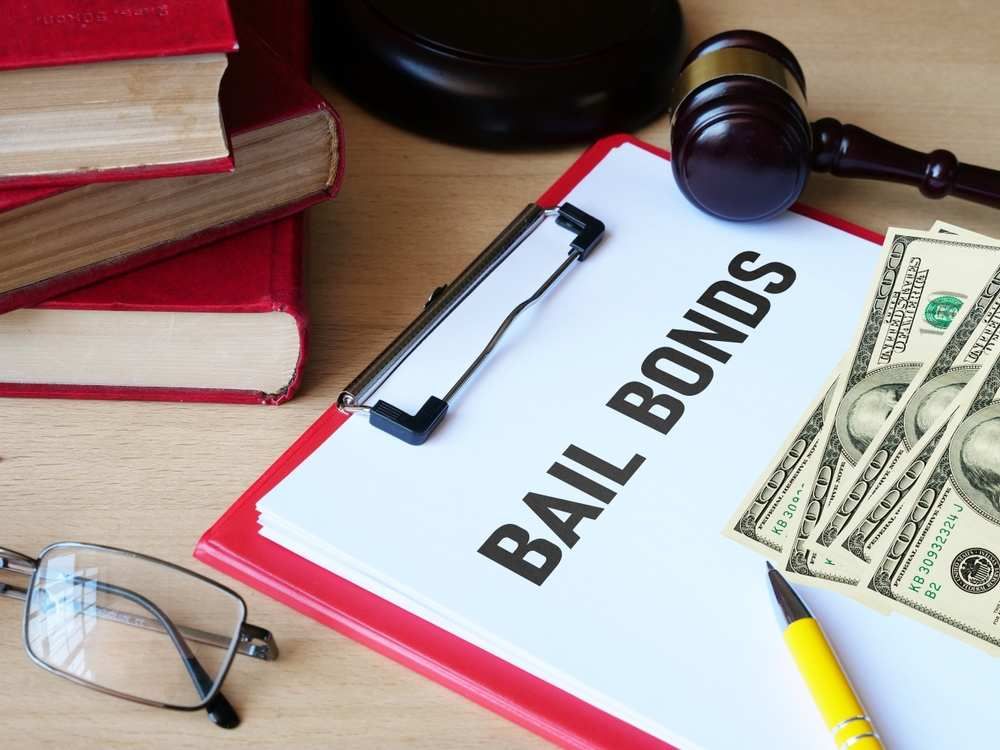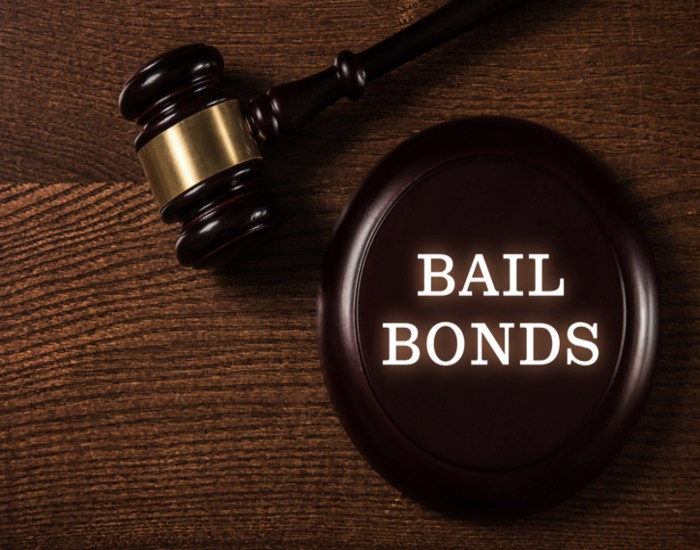Recognizing Your Legal Rights When Making Use Of a Bail Bondsman
Recognizing Your Legal Rights When Making Use Of a Bail Bondsman
Blog Article
Comprehending the Basics of Bail Bonds: What You Required to Know
Navigating the complexities of bail bonds is an essential element of the legal system that can considerably influence the implicated's trip via court proceedings. The intricacies of how bail bonds run, the numerous kinds readily available, and the important factors to consider in picking a trusted bail bondsman can be discouraging.
What Is Bail?
Bail is a monetary arrangement that permits a private implicated of a criminal activity to be released from safekeeping while awaiting test. The primary function of bail is to make certain that the accused appears for future court procedures (Bail Bonds). Commonly established by a court, the bail amount varies depending upon the nature of the criminal offense, the offender's criminal history, trip danger, and other pertinent variables
When bail is approved, the charged or a representative needs to pay a defined sum, which may remain in money or with a bail bond. Sometimes, bail can be refuted altogether, specifically for severe offenses or if the suspect positions a substantial risk to public safety and security. The principle of bail is rooted in the presumption of virtue, strengthening the idea that individuals must not be punished before a conviction.

Understanding Bail Bonds
A bail bond is an economic tool that promotes the launch of an implicated individual from custody, functioning as a guarantee for their appearance at future court days. This setup allows accuseds to maintain their flexibility while waiting for test, minimizing the worries related to incarceration. The bail bond procedure generally includes a third-party firm, referred to as a bondsman, that gives the necessary funds to the court on behalf of the implicated.
Bail bonds come in numerous forms, including surety bonds, residential property bonds, and cash bonds, each with distinct demands and ramifications. Guaranty bonds, one of the most usual type, need an exceptional payment, generally a percent of the complete bail amount, which is non-refundable. On the other hand, a residential or commercial property bond entails utilizing property as security, while cash money bonds necessitate the complete bail quantity to be paid ahead of time.
Understanding the subtleties of bail bonds is important for accuseds and their households. It is important to grasp the potential monetary implications, including responsibilities and fees to the bail bondsmansman, in addition to the legal responsibilities linked to guaranteeing court looks. Expertise of these aspects aids in making educated choices throughout a difficult time.
How Bail Bonds Work
The process of safeguarding a bail bond generally involves several vital actions that ensure the accused can regain their freedom while waiting for trial. Initially, the individual or their representative get in touches with a bondsman, who examines the situation and the linked threats. The bail bondsman will certainly call for information about the accused, consisting of the fees, the bail quantity set by the court, and any appropriate personal information.
Once the bondsman concurs to provide the bond, the accused or their representative should pay a non-refundable charge, normally a percent of the complete bail amount. This charge makes up the bondsman for tackling the financial danger of guaranteeing the accused appears in court. In some situations, collateral might likewise be required, such as residential property or beneficial assets, which functions as safety and security for the bond.
After any collateral and the fee are prepared, the bondsman submits the needed documents to the court. Upon authorization, the bail is uploaded, and the implicated is launched from safekeeping. It is important for the implicated to follow all court dates and problems, as failing to do so can cause the loss of the bond and prospective lawful consequences.
Kinds of Bail Bonds
Numerous kinds of bail bonds are available to match different scenarios and requirements. One of the most common type is the guaranty bond, where a bail bondsman guarantees settlement of the complete bail quantity to the court for a non-refundable fee, usually around 10% of the bail. This arrangement allows accuseds to protect their launch without paying the entire bail upfront.
One more kind is the cash money bond, which requires a co-signer or the offender to pay the complete bail amount in cash directly to the court - Bail Bonds. This choice is usually preferred for lower bail amounts, as it ensures the cash is returned upon the accused's appearance at all court procedures
Residential property bonds involve using realty as collateral. In this case, the court puts a lien on the building, which can be surrendered if the offender stops working to show up.
Finally, government bail bonds are specifically designed for government cases, typically including higher quantities and added intricacies. Recognizing these various bail bond types is important for offenders and their family members in making notified decisions during a difficult time.
Choosing a Bondsman
When selecting a bondsman, it is important to consider several crucial variables that can impact the total experience and result. this post First, assess the bail bondsman's reputation by looking into on-line reviews and obtaining suggestions from trusted sources. A reputable bail bondsmansman will have a history of professionalism and effective situations.

It is additionally crucial to comprehend the fee structure. Most bail bondsmensman bill a non-refundable fee, usually around 10% of the bail amount. Be wary of any covert charges or unusual settlement methods. Openness in prices is a trademark of a credible bondsman.
Verdict
In recap, understanding the basics of bail bonds is necessary for people associated with the lawful system. Bail works as a monetary guarantee of court look, while different kinds of bail bonds cater to different conditions. Recognizing the operational devices of bail bonds and choosing a credible bail bondsmansman can significantly influence the total experience. A detailed analysis of available alternatives guarantees informed decision-making, ultimately assisting in a smoother navigating with the intricacies of the legal procedure.
The intricacies of exactly how bail bonds run, the different types readily available, and the critical considerations in selecting a reputable bail bondsman can be intimidating. The bail bond process normally includes a third-party firm, recognized as a bail bondsman, that gives the essential funds to the court on part of the accused.
The most typical type is the guaranty bond, where a bail bondsman guarantees repayment of the full bail quantity Check Out Your URL to the court in exchange for a non-refundable fee, normally around 10% of the bail. Bail serves as a monetary assurance of court look, while different types of bail bonds provide to various scenarios. Recognizing the operational mechanisms of bail bonds and selecting a trustworthy bail bondsman can dramatically influence the overall experience.
Report this page